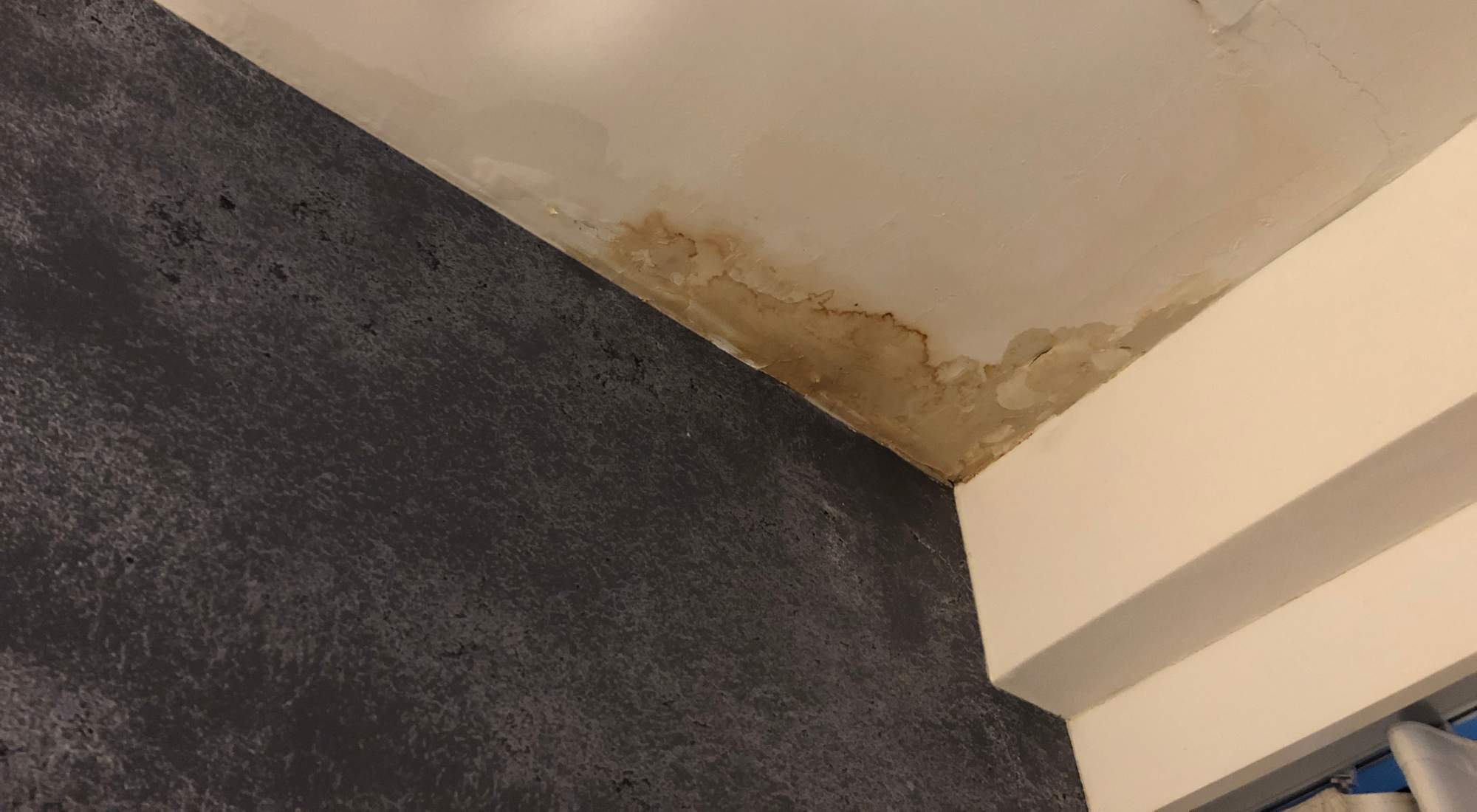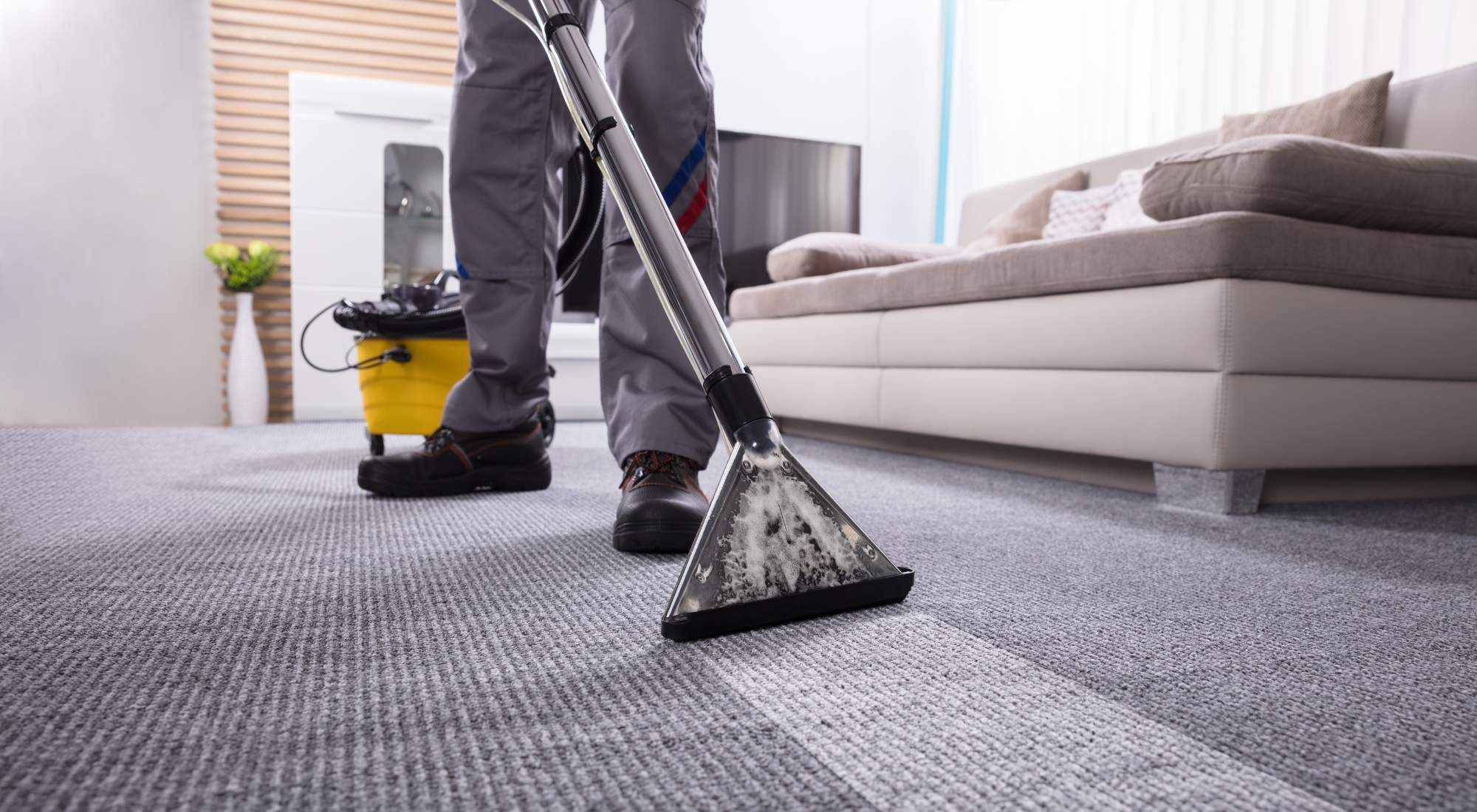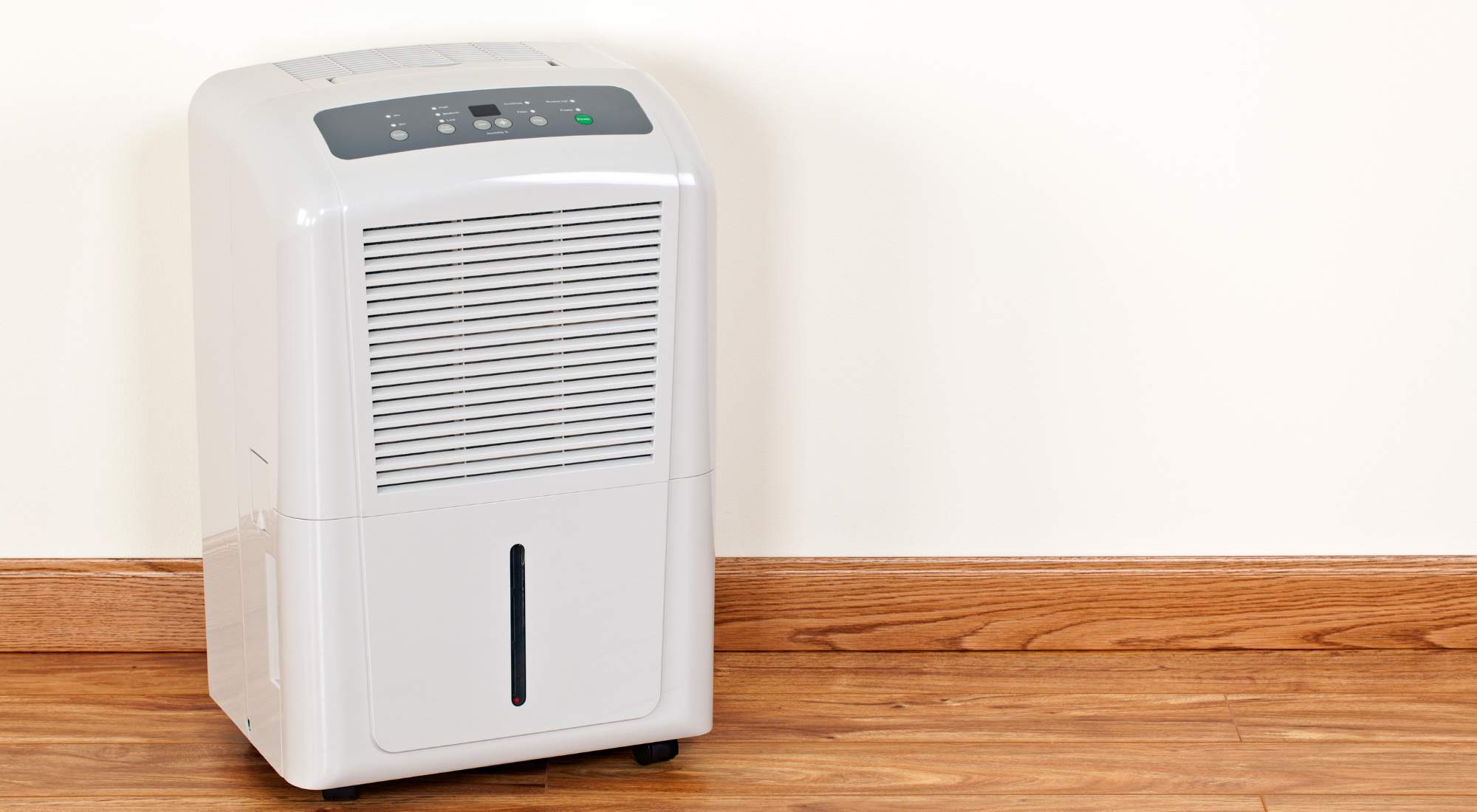You should feel free to do anything you want in your home — including breathing deeply without being grossed out by the mustiness. How can you truly enjoy your home if you can’t even enjoy the smell of it?
Getting rid of the musty smell in your house isn’t rocket science — although sometimes it does help to bring in some professional help.
We’ll help you understand the common causes of mustiness, what can be done to freshen things up, and when it might be time to call in the professionals.
Table of Contents
- Typical Causes of a Musty Smell in a House
- How Do You Get Rid of a Musty Smell in a House?
- 5 DIY Musty Smell Removal Techniques
- 2 Professional Musty Smell Removal Techniques
- Get Rid of the Musty Smell in Your House With Odor Removal Services From Pure Environmental
Typical Causes of a Musty Smell in a House
Moisture
Excess moisture in your home is a leading cause of mustiness. Typically, it’s due to the growth of mold, mildew, or bacteria — all of which thrive in moist environments.
Mold and mildew are both types of fungi, which means they reproduce by releasing spores. When mold or mildew are present you can smell these spores in the air.
As bacteria grow, they break down organic matter such as wood, drywall, and fabrics. This process can release various odorous compounds into the air. Some types of bacteria also produce gasses like hydrogen sulfide and ammonia, which can be unpleasant to smell.
Check for leaking plumbing and appliances to address the source of the excess moisture. It’s also possible that water is condensing somewhere. Condensation is often seen on windows, in bathrooms, or in kitchens — where warm, moist air comes into contact with a cooler surface.
Even if you don’t have any leaks or excessive condensation you could still have too much moisture from the air itself. If you live in a generally humid climate then this might be why you are finding a mustiness in the air.

Poor Airflow
When airflow is limited, moisture remains trapped and can end up settling on surfaces, causing mold and mildew to grow. This can happen from typical activities or humid weather.
Poor airflow can also cause dust and dirt to accumulate in hidden spaces, mixing with moisture and creating ideal breeding grounds for bacteria. This can add to the mustiness.
Moisture and dust are a natural part of any home environment — the problems happen when poor airflow doesn’t allow for adequately replacing the stale air with fresh air. Opening windows, using fans, or proper HVAC maintenance can make a huge difference.
Buildup in the HVAC System
Your HVAC system is a key player in circulating air around your house, and if it’s not working effectively it can lead to stale air that starts to smell musty. Regularly changing the air filter in your HVAC system is critical.
Airflow is reduced when air filters become clogged. This reduces the efficiency of your HVAC system, which means less airflow and more money spent on energy. Additionally, you can shorten the lifespan of your system due to the extra mechanical wear.
In addition to filter maintenance, ensure your vents have good airflow and your ductwork is clear of debris:
- If vents are blocked by furniture/etc, then airflow will be impeded.
- If your ductwork is dirty, it will slow airflow and potentially reintroduce contaminants into the air.
Soiled Carpet
Some carpet messes can be stubborn to fully eliminate, contributing to a musty smell. Cigarette smoke, food or drinks, and pet urine can be especially tricky to deal with. A deep cleaning may be necessary, with a heavy-duty carpet cleaner.
Even after cleaning your carpet, you may still notice a smell.
All of that cleaning solution can take a long time to dry — especially in a basement where air circulation is often limited. If left wet for too long, then you might run into the separate problem of mold or mildew buildup.
Pure Environmental has powerful equipment to both clean your carpet and dry it quickly. Reach out to us for a free estimate — we’ll help get the musty smell out of your carpet once and for all.
How Do You Get Rid of a Musty Smell in a House?
Addressing the root cause is the first step to freeing yourself from the musty smell once and for all. Look for sources of excess moisture, carpet messes, poor air circulation, or an HVAC system in need of maintenance. Afterward, you can address the symptoms and get your home smelling fresh again.
5 DIY Musty Smell Removal Techniques
Often some fairly straightforward steps can get rid of the musty smell. Usually, mustiness can be managed with some regular cleaning and maintenance. If you have a serious issue on your hands — such as after a large water leak — then calling the professionals is a wise choice.
#1: Deep Clean Carpet and Upholstery
If your situation resulted in the carpet or upholstery becoming musty-smelling, then a deep cleaning will be necessary. Simply increasing the air circulation, for example, won’t eliminate any mold or mildew that has built up.
Time to break out the carpet cleaner — or rent a strong one that can do a true deep cleaning.
You need to not only deeply clean to remove all of the traces of mold and mildew but also remove as much moisture as possible. The goal is to have the surface completely dry ASAP.
If it stays damp for too long then it could cause the mustiness to return, and you’ll be back at square one.

#2: Clean Every Horizontal Surface
Cleaning every surface where dust, debris, or mold/mildew spores could have settled is an important step to keeping the mustiness away. Don’t cut any corners here — a thorough cleaning will give you the best chance at keeping the mustiness away.
This is not about simply dusting your surfaces — We need to do an actual cleaning and a simple damp cloth won’t do. Often a diluted vinegar solution is a great way to clean and disinfect the surfaces in your home.
If you are facing a major air quality issue in your home, it can take a long time to properly clean every surface. Reach out to Pure Environmental for an estimate on getting your home clean and free from mold and mildew.
#3: Allow Fresh Air Into the Home
Getting fresh air in — and stale air out — is a key step in stopping the cycle of mustiness:
- If there has been mold or mildew growth, let those spores get carried out of the house as you get fresh air circulating.
- If other substances were contributing to the mustiness, then keeping the air fresh will help the odors dissipate over time.
- If moisture buildup is a problem, fresh air can help push the moist air out and keep surfaces from remaining damp. This is only true if it is more dry outside than inside. In the winter, opening things up may add moisture.
/
#4: Keep Your HVAC System Properly Maintained
Your HVAC system needs to be properly maintained to effectively move air around your house and filter out dust and contaminants. Changing your air filter regularly is the easiest thing you can do to keep your HVAC system working effectively.
A typical 1-inch filter needs to be changed every 90 days — If you have pets or exceptionally dusty air then every 60 days may be necessary.
Choose an air filter with a high MERV rating to capture as much dust, mold, and bacteria as possible. MERV stands for “Minimum Efficiency Reporting Values” — a higher rating means smaller particles will be trapped in the filter.
Also, check that floor registers are uncovered and there’s no accumulation of debris within the venting. This helps ensure your HVAC system can push fresh air into each room.
#5: Utilize Odor Absorbers and Dehumidifiers
If you are having trouble keeping moisture levels low enough, then a dehumidifier can be helpful. This can be especially useful in a basement, where adequate airflow can be difficult.
For stubborn odors, you might need something that can absorb those smelly particles:
- Baking soda is an effective odor absorber you probably already have in the house — sprinkle a healthy amount on your carpet, and vacuum it up after a few hours.
- Activated charcoal can be used to absorb moisture and airborne particles. It acts like a sponge. Place the charcoal pouches or bags in the areas where you notice the mustiness.

2 Professional Musty Smell Removal Techniques
A musty smell is more than just annoying — if the mustiness is due to mold or mildew, those airborne spores could pose a health risk. To get the cleanup done quickly, a professional remediation company like PURE Environmental is ready to help.
#1: Heat Cycling Treatment
Pure Environmental uses heat treatments as part of the deodorizing process. This is a safe and effective treatment that works on all types of surfaces.
Best of all, this heat treatment does not need chemicals to eliminate odor-causing compounds.
#2: PurAyr™ Technology
Pure Environmental uses PurAyr™ technology to rapidly neutralize odors in your home. This technology eradicates bacteria and volatile organic compounds from the air, eliminating odors and improving air quality.
It doesn’t even need any chemicals to do its job. The PurAyr™ process utilizes UV light and titanium dioxide nanoparticles to accelerate the oxidation of organic material.
An added benefit to PurAyr™ technology is it doesn’t produce any harmful gasses during operation. Traditional odor-reduction tools that utilize ozone can produce nitrogen oxides, which are known to have a negative impact on health and the environment.
Get Rid of the Musty Smell in Your House With Odor Removal Services From Pure Environmental
Don’t live with musty smells any longer. When you have serious odor removal needs, you need experienced professionals who’ll get you back to enjoying your home.
Pure Environmental has experience with all kinds of remediation. We know where to look to eliminate the root cause of your musty smell, and we can effectively clear the air afterward.
Contact us today for a free estimate, and we’ll get you breathing fresh air again.
Recent posts
- Pros and Cons of Heat Treatment for Bed Bugs: Things To Consider When Reviewing Your Options for Remediation
- How To Get Rid of Pet Odor in Your House
- Clearing the Air: How To Clean Walls From Cigarette Smoke
- Deodorizing Your Living Space: How To Get Rid of a Musty Smell in Your House
- How Do You Get Rid of Mold in Your Attic? Tips from the Professionals
Recent Posts
- Pros and Cons of Heat Treatment for Bed Bugs: Things To Consider When Reviewing Your Options for Remediation
- How To Get Rid of Pet Odor in Your House
- Clearing the Air: How To Clean Walls From Cigarette Smoke
- Deodorizing Your Living Space: How To Get Rid of a Musty Smell in Your House
- How Do You Get Rid of Mold in Your Attic? Tips from the Professionals
